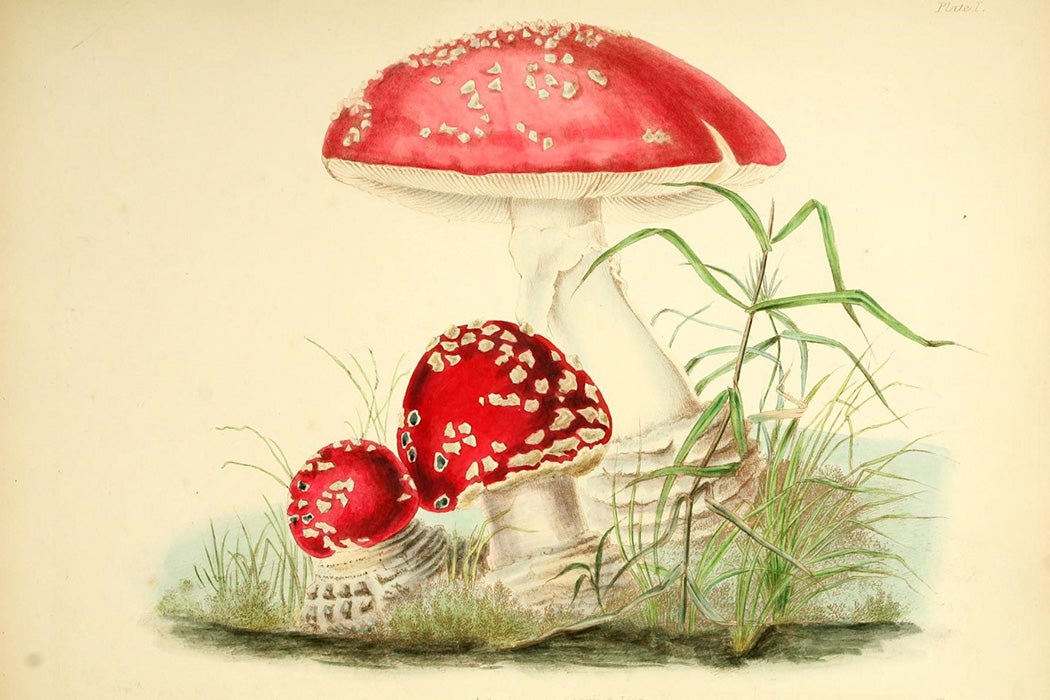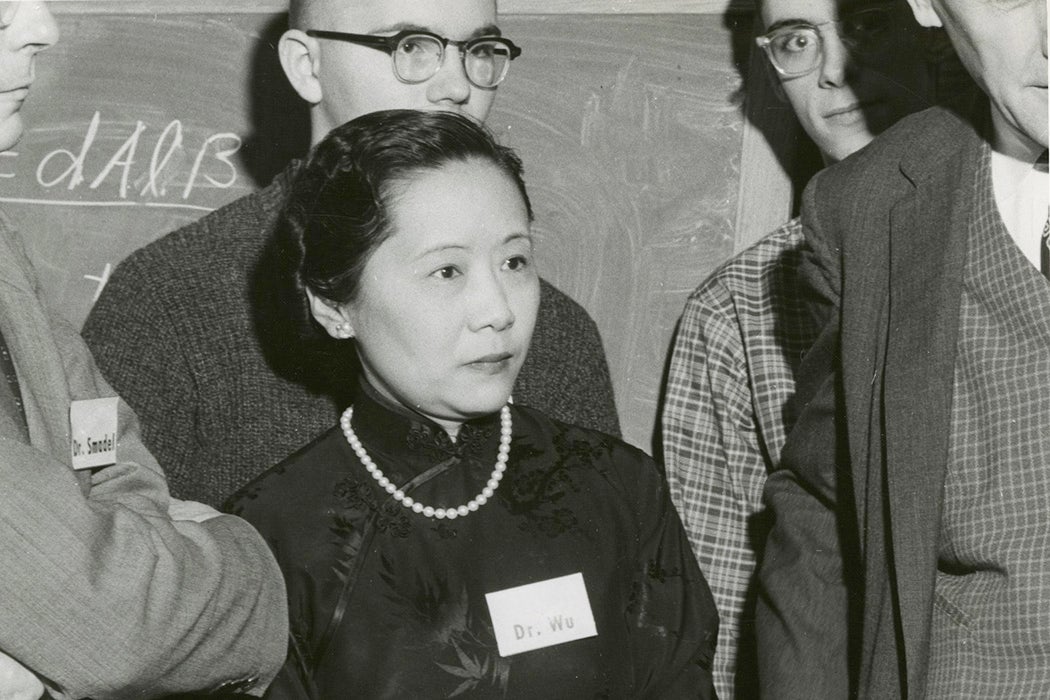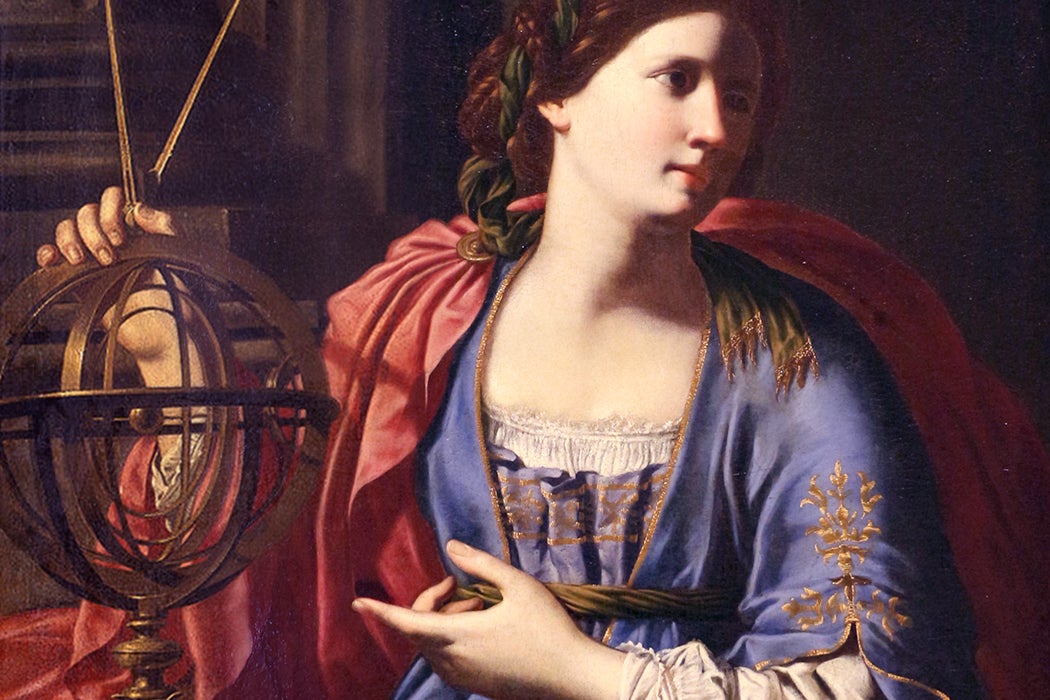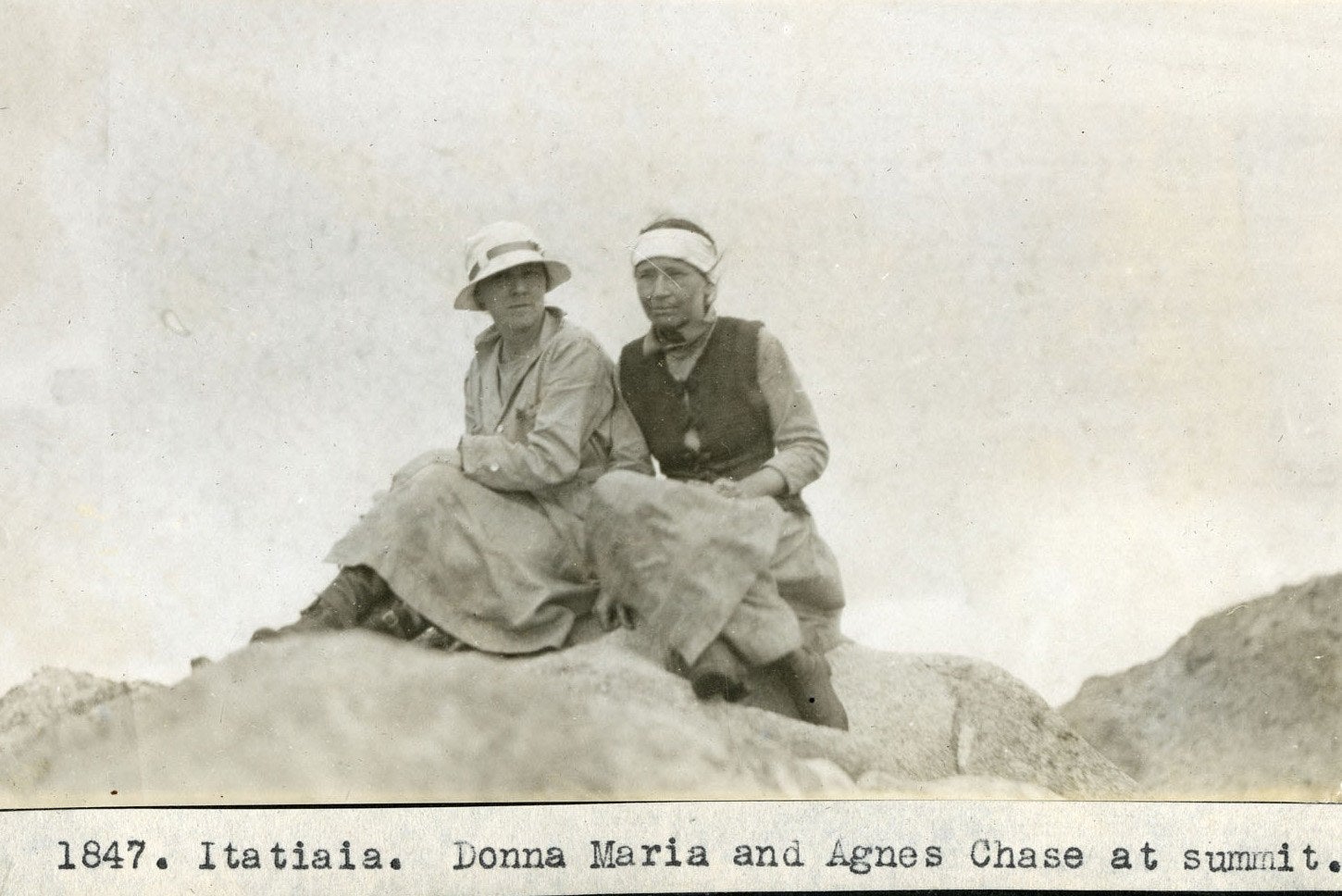“I am always under the uncomfortable impression that the thing that I am doing is not the right thing to be doing.” So wrote Anna Maria Hussey, an amateur mycologist, in 1849. Hussey was an essential part of a small cadre of women in the nineteenth century committed to scientific illustration. Though polite society tended to view them as eccentric, their enthusiasm for their subject did not waver. Mary Elizabeth Banning, another amateur mycologist, had “clean gone mad” for her interest in “frog stools,” according to her account from 1880, and in 1865 Margaret Plues observed, “Men will acknowledge beauty in the tiniest moss … and then peep into your basket of Fungi … and merely exclaim with disgust, ‘What a lot of toadstools!’”
Until the early twentieth century, botanical illustrators documented flora by hand. Often enthralling, their renderings were a means of sharing information with scientists, physicians, herbalists, and gardeners. Indeed, in the nineteenth century, drawing plants was an amusement for women. Indeed, at the time, those interested in natural science were diverging into hobbyists and serious scientists; the latter were members of scientific societies where they shared work and socialized. Though women were unwelcome in those professional realms, a number of them nevertheless defied convention. They eschewed romantic flower painting for serious botanical illustration and research, which then encompassed both plants and fungi, as mycology became a science unto itself only in the last century.
Among that already small cohort, women in Great Britain and North America who were fungi-focused specifically were an even smaller minority. Studying fungi was decidedly unladylike, and the scientific establishment largely ignored these women despite their valuable professional contributions. Beatrix Potter, for example, is famous for her children’s stories but not for the two hundred and fifty stunning scientific illustrations she made of fungi, or for being among the first in England to cultivate them from spores. Mary Banning worked in near isolation, but for her decades-long correspondence with mycologist Charles Horton Peck. Regardless, when she entrusted Peck with her most important work, he placed it in a drawer and forgot about it.
Some of these women wanted their work to be accessible and appeal to a broad audience that included mothers who’d in turn teach their own children informally about natural history. They wanted to make significant contribution to their nascent field and simultaneously promote scientific study outside and beyond the rarified environment of elite institutions.
As the twentieth century dawned, female mycologists increasingly were able to make a living in mushrooms. Violetta White Delafield became an investigator at the New York Botanical Garden while producing hundreds of mushroom illustrations. Elsie Maud Wakefield, also a fungal illustrator, worked at the Royal Botanic Gardens of Kew, maintaining and contributing to their fungal collections. Gulielma Lister was twice president of the British Mycological Society. While those advances are laudable, barriers to women’s advancement in the sciences endure. A recent report revealed that women continue to receive significantly lower pay than men and make up less than half of the workforce in the biological sciences. That share is even smaller in other in other scientific fields.
In the meantime, the accomplishments of female mycologists are increasingly being celebrated in online exhibits from the Cornell University Library in upstate New York, the Lloyd Library and Museum in Ohio, the Linda Hall Library in Missouri, and Virginia’s Oak Spring Garden Foundation, among other places. Female illustrators are also being featured in “Women in Historical SciArt,” an ongoing project spearheaded by independent researcher Michelle Marshall that’s rediscovering female scientific illustrators from the sixteenth century through the twentieth, sharing links to their work and their life stories.
Here are snapshots of several such mycologists whose illustrations straddled the boundary between art and science some two hundred years ago.
Anna Maria Hussey (1805-1853)
Men in the nineteenth century were not alone in doubting women’s capabilities in scientific inquiry. “[I] feel sure Mycology was never intended for women, who love jumping to conclusions better than such patient research,” wrote Anna Maria Hussey in 1849. Nevertheless, she authored Illustrations of British Mycology: Containing figures and descriptions of the funguses of interest and novelty indigenous to Britain in two volumes. She and illustrator Frances Reed, her sister, created the one hundred and forty detailed, hand-colored mushroom lithographs in the volumes. Lithography became popular in the mid-nineteenth century in part for its ability to produce crisper images than those made by engraving wood blocks or metal, as had been done previously. Hussey also illustrated The Esculent Fungusses of England, by naturalist Charles David Badham.
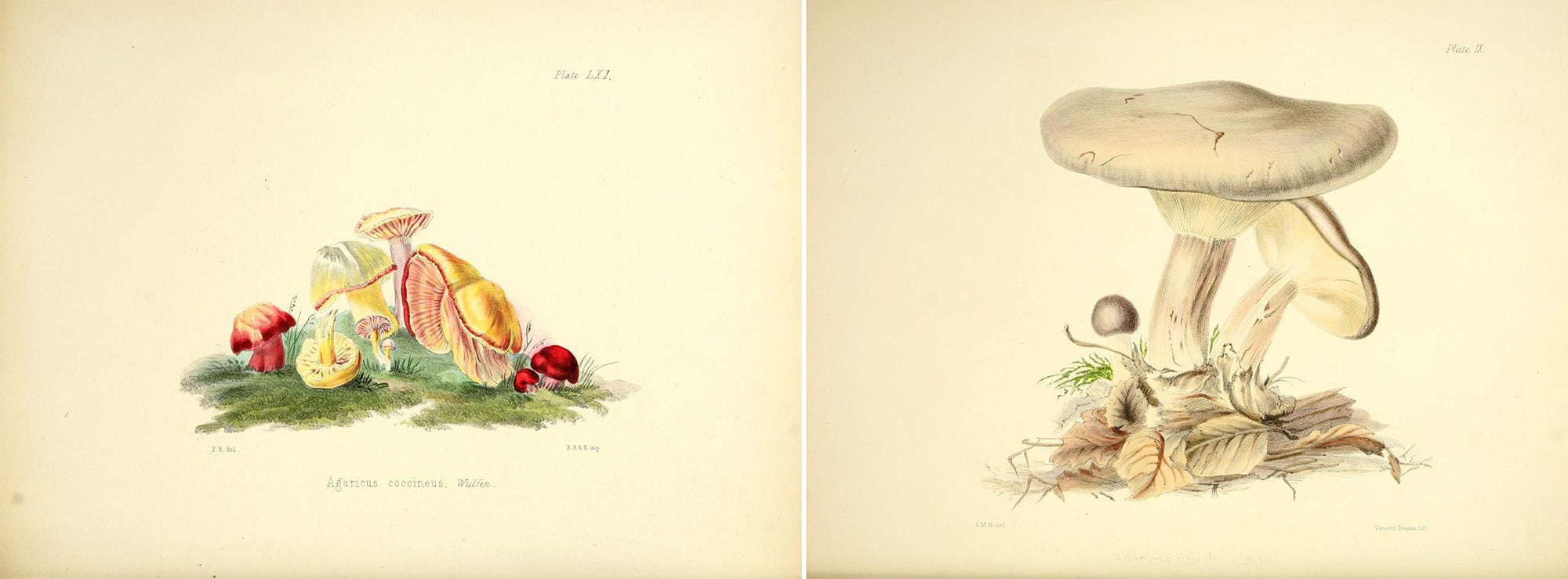
Hussey’s family was well-connected in the scientific community; she corresponded with mycologist Miles J. Berkeley, who named a fungal genus, Husseia, after her. Married to a clergyman, she resented the communal responsibilities that went along with her station and sold her illustrations to help support her husband and six children. Hussey’s writing introduced mycology to a lay audience. She offered descriptions of mushrooms and their habitats, foraging instructions, recipes that used edible mushrooms, and other notes.
Mary Elizabeth Banning (1822-1903)
Maryland’s first mycologist, Mary Elizabeth Banning was only the third woman in history to identify fungal species new to science. Single and caring for her sickly mother and unwell older sister, Banning made time to tromp around woods and meadows, identifying, characterizing, and illustrating mushrooms. She published some of her observations in botanical journals, including lively accounts of her foraging experiences. In one, she recounts bringing home a few (aptly named) stinkhorn mushrooms: “… there was an outcry through the house, one enquiring of the other what the loathsome smell could be, and where it came from. Each moment was filled with anxiety, lest my precious fungus, for which I had already endured so much, might be seized and carried off … .” Indeed, the stink comes from the gooey mass of fungal spores on top of the mushroom cap. She astutely proposed that the stench lures in flies and other insects, which then transport the spores afar like a bee transports pollen.
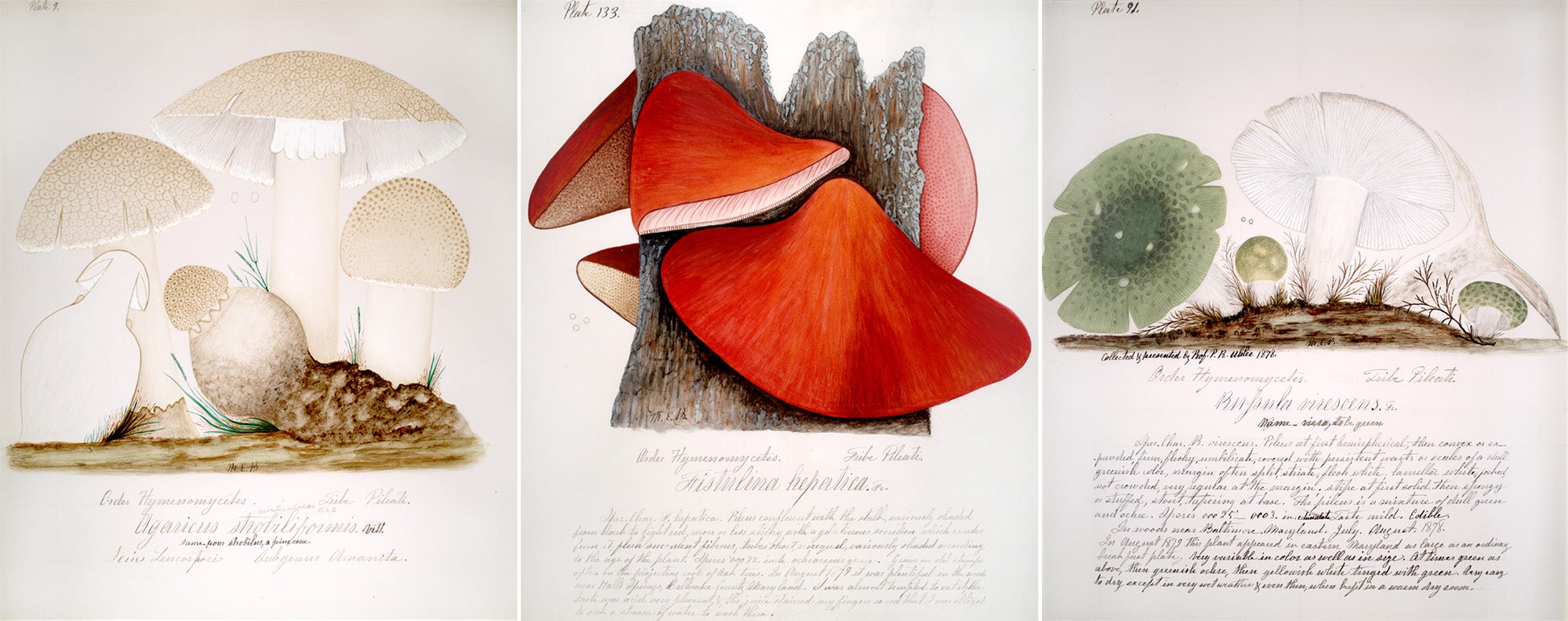
Banning spent twenty years creating The Fungi of Maryland, North America’s most comprehensive illustrated record of the day. In this, she beat several male authors by a decade or less, including mycologist George Atkinson, microscopist Thomas Taylor, and naturalist William Hamilton Gibson, though their books were published while hers was not. Banning accompanied her one hundred and seventy five stunning watercolors with notes on mushroom classification, appearance, and where she encountered them. She wove her thoughts on faith and morality in with science, believing that all three were important for educating young people. Wanting input on the accuracy of her work and lacking the finances to publish it, Banning sent her manuscript to Peck at the New York State Museum of Natural History. It sat forgotten in a dusty drawer at the museum for over eighty years, well after she died impoverished in 1903.
John Haines, curator of mycology at the museum, found The Fungi of Maryland and arranged for the display of some of the watercolors. The Maryland Historical Society also exhibited some of Banning’s watercolors, and she was elected to the Maryland Women’s Hall of Fame in 1994. The fungus Hypomyces banningii was named in her honor. Meanwhile, her manuscript remains unpublished.
Margaret Plues (1828-1901)
Like Banning, Margaret Plues of Yorkshire, England was born to a large, well-off family; never married; and lost most of her wealth. She loaned a large sum to a monsignor to support one of his projects; he turned out to be a poor financial manager and the project went bankrupt. Whereas Banning spent her last years in a boarding house, Plues joined a convent near the end of her life, ultimately becoming Mother Superior.
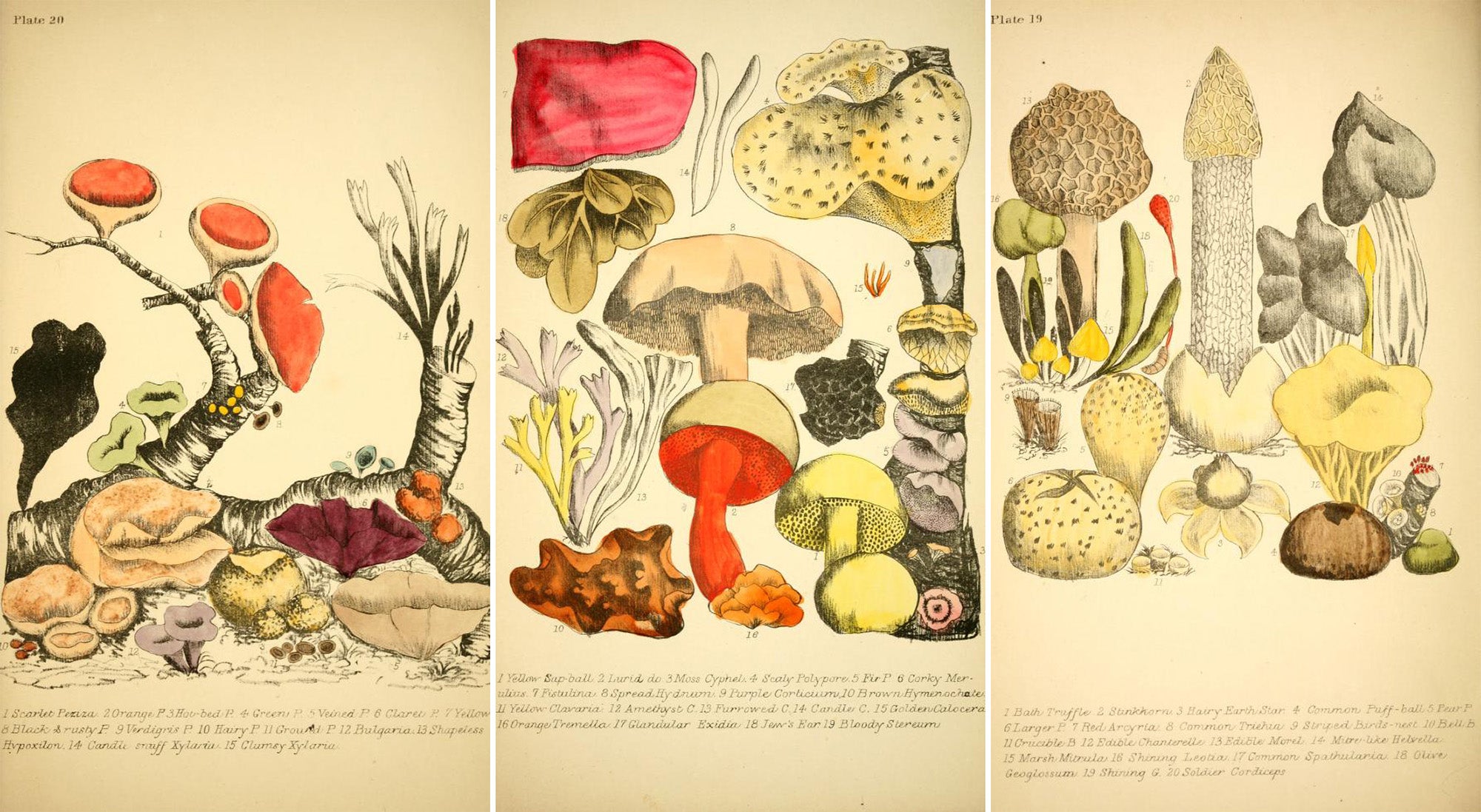
Plues wrote and illustrated popular guide books about local plants and mushrooms, including Rambles in Search of Flowerless Plants. The book contains hand-colored lithographs of mushrooms and line drawings of their structural details. Plues blended species descriptions with anecdotes from her rambles, all in colorful prose. Beyond mushrooms, she was interested in small fungi that sicken plants, and in lichens. A prolific writer, she also published A Selection of Eatable Funguses of Great Britain, at least five other natural history books, and a few story books under the pseudonym Skelton Yorke. Like Hussey and Banning, Plues mixed technical language with writing accessible to a lay audience. While traditional in many ways, Plues was dedicated to the fieldwork behind her illustrations and encouraged other women to explore nature. Priest and scientist Julius Nieuwland named the fungus Pluesia hypoxyloidea in her honor.
Sarah Price (fl. 1864)
Sarah Price was born in Bitterly, Shropshire County, England, though the exact dates of both her birth and death are unknown. Historians assume she was educated at home. Price was one of the first people to document the mushrooms in the Shropshire region, one of England’s least populated areas. She created Illustrations of the fungi of our fields and woods: drawn from natural specimens, volumes one and two. They contain vibrant, hand-colored lithographs of one-hundred-thirty mushroom species. Price included fungal names along with where and when they grow. She published her work with the financial support of over two hundred subscribers, among whom was the director of the Royal Botanic Gardens of Kew. In a humble dedication to him, she wrote: “To Sir William Jackson Hooker … This small contribution to the literature of botany, a study to which he has devoted an illustrious life, is by his permission inscribed, by his very obedient servant, S. P.”

In 1880, English botanist William Phillips wrote a scientific report about mushrooms in Shropshire that references Price’s work as one of the few accounts of fungi in the region. He describes illustrations by the “late Mrs. Sarah Price” as “true to nature,” citing many of them and suggesting that Price was deceased. Phillips also notes that the Reverend Miles Berkeley helped identify some of the rarer species that Price illustrated, implying that she knew the well-known mycologist.
M. F. Lewis (1860-1903)
M. F. Lewis was born not far from Price in Shropshire. Besides that, little is known about Lewis, including what her initials stand for. She executed precise fungal illustrations and her guide Fungi Collected in Shropshire and Other Neighborhoods is the culmination of forty years of explorations in England and Wales, documenting hundreds of mushrooms. Volumes one, two, and three of her work are hand bound in leather with gilded spines, and contain detailed watercolors of some three hundred species. Lewis’s field notes include scientific names, locations, and dates for each mushroom documented.
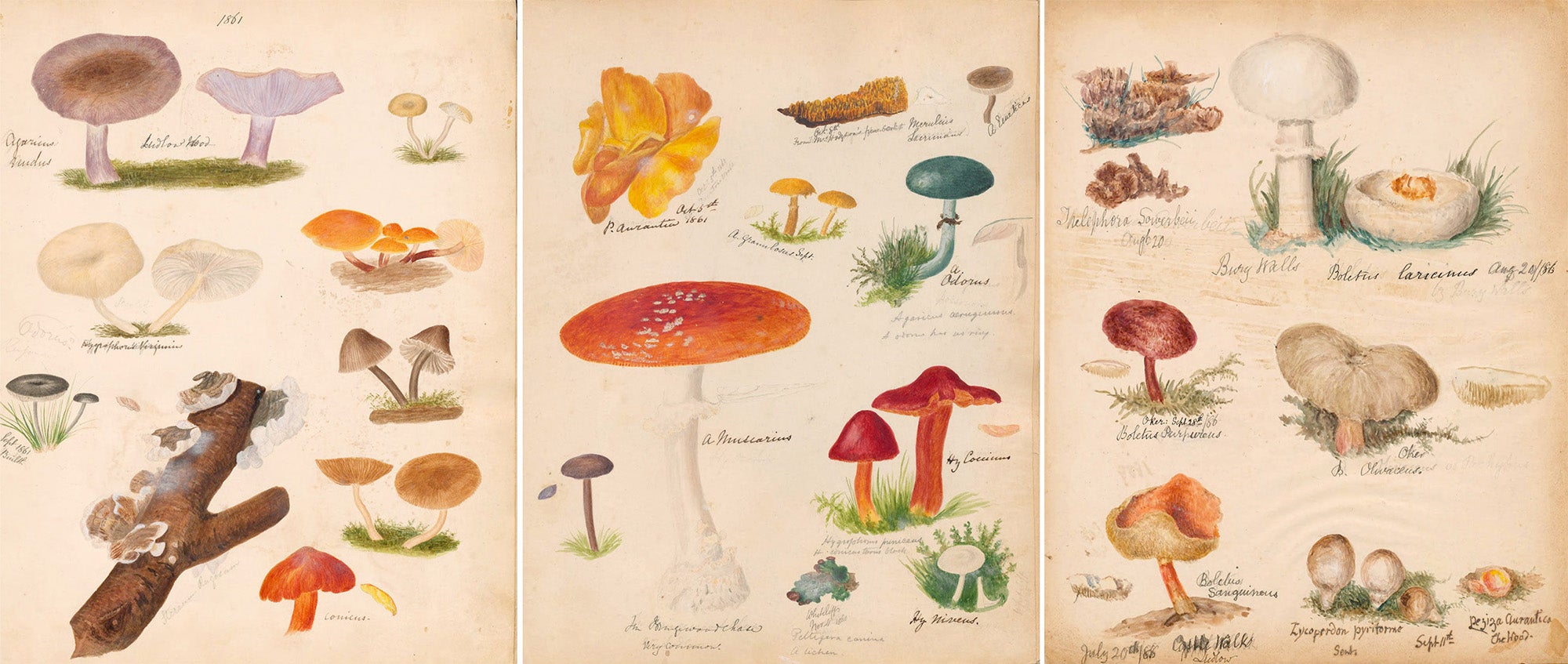
Unfortunately, Lewis omitted information that might provide insight into who she was. Still, her work received recognition from the scientific community. The British Mycological Society listed her as an amateur mycologist in their records. And the same William Phillips who referenced Sarah Price’s illustrations also referenced Lewis’s in his report on Shropshire mushrooms. He praised her work, writing: “Several rare species are very artistically represented …,” and noted his fortune in having access to the work of “Miss M. F. Lewis, of Ludlow.”
The Mann Library at Cornell University has the only copy of Lewis’s work, which will be officially published in October 2023, a century and a half after she Lewis completed it.
You Might Like
The Famous and Forgotten Women of STEM
Before the Civil War, Women Were Welcomed into the Sciences
Women’s Fight for Scientific Fieldwork
Support JSTOR Daily! Join our new membership program on Patreon today.
